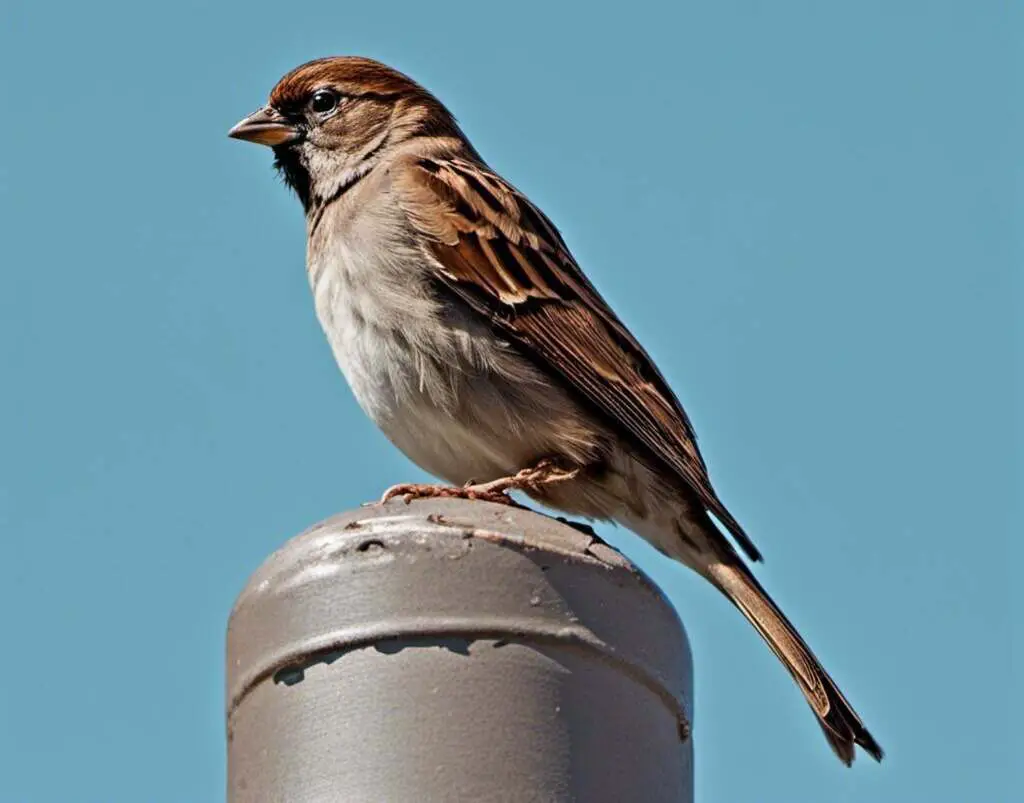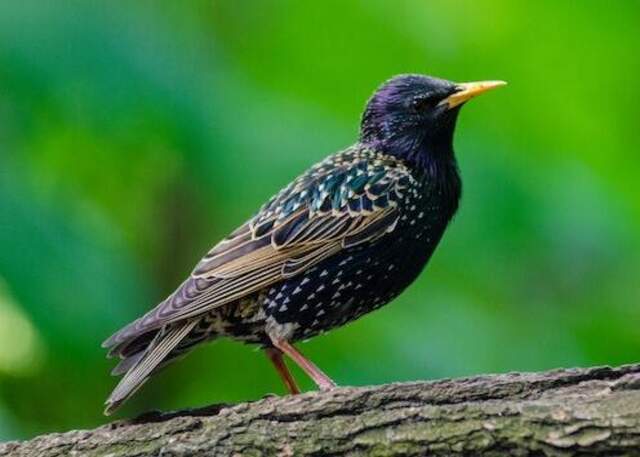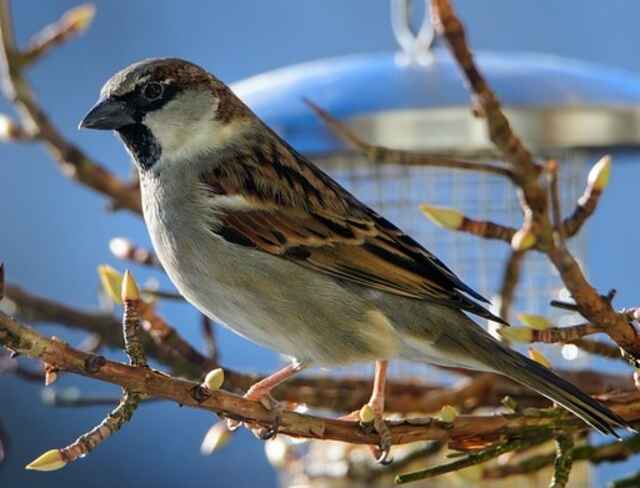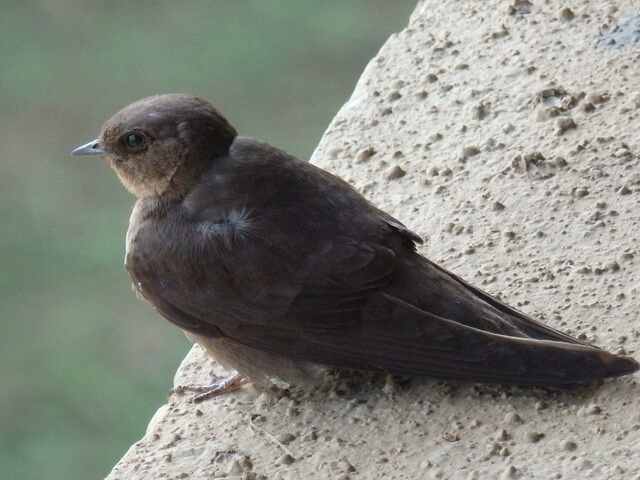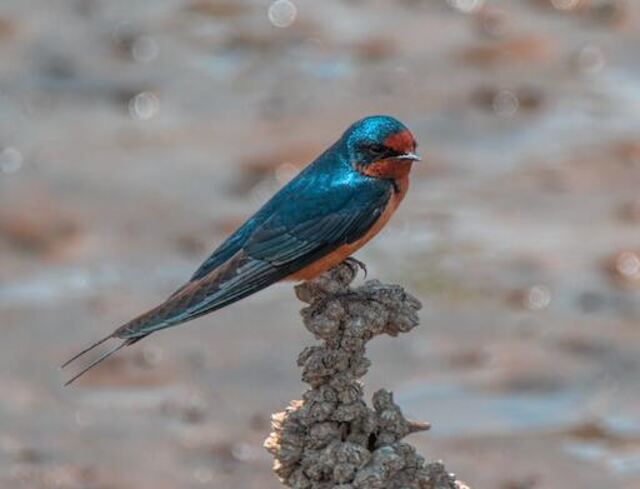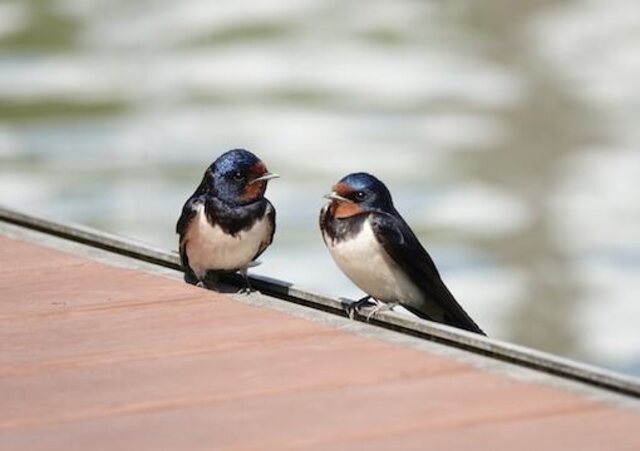Do you hear chirping sounds or notice debris around your chimney? These may be signs that birds have made a nest in your chimney. While bird activity can be entertaining to watch, it can also be dangerous and cause damage to your chimney.
It’s important to remove birds from your chimney safely and efficiently to protect your home and the wildlife. In this guide, we will provide step-by-step instructions on how to remove birds from your chimney and prevent future nesting.
Table of Contents
- 1 Key Takeaways:
- 2 How To Get Birds Out Of Your Chimney?
- 3 Understanding the Need for Chimney Bird Removal
- 4 Assessing the Situation: Identifying Bird Presence in Your Chimney
- 5 Bird Removal Methods: Step-by-Step Guide
- 6 Ensuring Future Prevention: Chimney Bird Control Tips
- 7 Dealing with Bird Nests: Safety First
- 8 Seeking Professional Help: When to Call a Chimney Sweep
- 9 Removing Birds Humanely: Considerations for Wildlife Conservation
- 10 Cleaning and Repairing the Chimney: After Bird Removal
- 11 Maintaining a Bird-Free Chimney: Regular Inspection and Maintenance
- 12 Conclusion
- 13 FAQs: How To Get Birds Out Of Your Chimney
- 13.1 What are the potential risks of having birds in my chimney?
- 13.2 How can I determine if there are birds in my chimney?
- 13.3 What are some effective bird removal methods?
- 13.4 How can I prevent birds from nesting in my chimney in the future?
- 13.5 What safety precautions should I take when removing bird nests from my chimney?
- 13.6 When should I consider calling a professional chimney sweep for bird removal?
- 13.7 How can I remove birds from my chimney in a humane way?
- 13.8 What steps should I take to clean and repair my chimney after bird removal?
- 13.9 How often should I inspect and maintain my chimney to keep it bird-free?
- 14 Author
Key Takeaways:
- Removing birds from your chimney is crucial to protect your home and the wildlife.
- Identifying bird presence in your chimney is the first step to bird removal.
- Different methods, such as installing a bird net or chimney cap, can be used for bird removal
- Regular chimney maintenance and preventive measures are essential to avoid future bird nesting.
- It’s important to prioritize safety and consider humane options during bird removal.
How To Get Birds Out Of Your Chimney?
To safely and humanely remove birds from your chimney, start by identifying the species and determining if they are protected by law. Close the damper and turn off any utilities connected to the chimney. Create an escape route for the birds and wait for them to climb out.
Install a chimney cap or screen to prevent future nesting. Avoid using harsh chemicals or methods that could harm the birds, and consider contacting a professional wildlife removal service for assistance.
Understanding the Need for Chimney Bird Removal
Having birds nesting in your chimney may seem harmless, but it can cause serious damage to your home and pose a potential fire hazard. Ignoring the issue can lead to expensive repairs and even endanger the lives of you and your family. Therefore, it is important to address the situation promptly and effectively.
One of the main reasons birds nest in chimneys is due to the warmth and protection offered by the structure. Chimneys provide a sheltered area away from predators, making them an ideal spot for nesting. Birds may build their nests using twigs, branches, and other natural materials, which can clog the chimney and prevent proper ventilation.
If left unattended, the bird nest can also cause a chimney fire. Chimney fires can be caused by a buildup of creosote, a highly flammable substance that forms from the byproducts of burning wood. When a bird nest combines with the creosote, it can quickly ignite and spread to the rest of the home.
Therefore, it is crucial to remove the bird nest from your chimney as soon as possible to prevent any potential damage and ensure your safety. In the next section, we will discuss how to assess your situation to determine if a bird nest is present in your chimney.
Assessing the Situation: Identifying Bird Presence in Your Chimney
Before taking any action to remove birds from your chimney, it’s essential to assess the situation and determine if birds are actually present. Here are the steps to follow:
- Listen for sounds: If you hear chirping or scratching sounds coming from your chimney, it’s a good indicator that birds may have taken up residence.
- Look for debris: If you notice small twigs, leaves, and other debris falling into your fireplace, birds may be building a nest in your chimney.
- Use a flashlight: Shine a flashlight up your chimney and look for any signs of bird activity, such as feathers or nesting materials.
If you’re still unsure if birds are present, it may be best to consult a professional chimney sweep. They have the experience and tools necessary to identify bird presence and provide solutions for bird removal.
Chimney Bird Control
Once you’ve determined that birds are present in your chimney, it’s important to take action promptly. Ignoring the issue can lead to further problems, such as chimney fires or damage to your chimney. Follow these steps to remove birds from your chimney:
Bird Removal Methods: Step-by-Step Guide
If you’ve located birds in your chimney, there are a few methods you can use to remove them safely and efficiently. Here is a step-by-step guide to help you:
- Identify the bird species: Before attempting to remove the birds, it’s important to identify the species. Certain birds, such as chimney swifts, are protected by law, and their nests cannot be removed without a permit.
- Assess the situation: Determine the extent of the bird infestation and how deeply they are nesting in the chimney. This will help you decide on the best course of action.
- Install a bird screen: To prevent birds from entering your chimney in the future, install a bird screen. This is especially effective if birds have entered your home through an open flue.
- Use a bird net: A bird net is an effective way to catch birds that are nesting in your chimney. Place the net over the top of the chimney, securing it with weights or clips. Once the birds are caught in the net, they can be removed carefully.
- Install a chimney cap: A chimney cap is designed to prevent birds and other animals from entering your chimney. They come in various sizes and materials, so be sure to choose one that fits your chimney’s dimensions.
- Consult a professional: If you’re unsure about how to remove the birds safely or if the bird infestation is severe, it’s best to call in a professional for bird removal. They will have the necessary tools and experience to handle the situation safely.
Remember, when attempting DIY bird removal, safety should always come first. Wear protective gear and ensure proper ventilation to avoid respiratory issues from bird droppings and debris. Always follow the instructions carefully, and if you’re not comfortable or confident in handling the situation, seek professional help.
Ensuring Future Prevention: Chimney Bird Control Tips
Preventing birds from nesting in your chimney is essential to avoid future problems. Here are some tips to help you keep birds away from your chimney:
- Install a chimney cap: A chimney cap is a metal covering that fits over your chimney opening. It allows smoke and gases out while keeping birds and other animals out of your chimney.
- Use bird screens: Bird screens are wire mesh coverings that fit over your chimney opening. They allow smoke and gases out while keeping birds from entering.
- Regular maintenance: Regular chimney maintenance, such as cleaning the chimney and removing any debris, can discourage birds from nesting in your chimney.
If you suspect birds have already nested in your chimney, it’s important to remove them before taking these preventive measures.
By following these tips, you can help to prevent birds from nesting in your chimney and avoid the need for future bird removal.
Dealing with Bird Nests: Safety First
Removing a bird’s nest from your chimney requires careful consideration to ensure safe and humane removal. Here are a few essential tips to help you remove a bird’s nest safely and efficiently.
Safety Precautions
Firstly, safety should be a top priority when removing a bird’s nest from your chimney. Wear protective gear, including gloves and a mask, to protect yourself from bird droppings and dust. Ensure proper ventilation to prevent the accumulation of harmful gases from bird droppings and debris.
Also, be mindful of the risk of chimney fires, which can occur if the nest is dry and flammable. Take appropriate precautions, such as using a fire-retardant spray, to prevent fires from breaking out.
Non-Harmful Methods for Removing Bird Nests
When removing birds’ nests from your chimney, it is essential to use non-harmful methods to avoid hurting the birds. If the nest contains eggs or young birds, it is illegal to remove them, and you will need to wait until the birds have fledged. Consider consulting your local wildlife organization for guidance on how to proceed.
Once the birds have fledged, use a soft brush or gloved hands to remove the nest, starting from the top and working your way down. Be gentle to avoid damaging the chimney’s lining, which can lead to expensive repairs.
Professional Assistance
If you are unsure about removing a bird’s nest or if the nest is too large or difficult to remove, seek the help of a professional chimney sweep. They have the tools and expertise to remove the nest safely and efficiently without harming the birds or damaging your chimney.
By following these tips and precautions, you can safely and humanely remove a bird’s nest from your chimney and keep your home and the wildlife around it safe.
Seeking Professional Help: When to Call a Chimney Sweep
While there are various DIY methods to remove birds from your chimney, certain situations may require the expertise of a professional chimney sweep. If you have attempted to remove birds from your chimney but have been unsuccessful, or if the situation seems too complex or dangerous, it is recommended to call a professional.
A chimney sweep has the experience and equipment needed to safely and effectively remove birds from your chimney. They can also identify and fix any damage or issues with your chimney, ensuring it is in proper working order after bird removal.
It is especially important to call a professional if you suspect birds have been nesting in your chimney for an extended period. The longer they stay, the more damage they can cause to your chimney, and the risk of chimney fires increases.
Additionally, if you live in an area with protected bird species, it is crucial to contact a professional to ensure proper bird removal methods are used, taking into consideration the birds’ well-being.
When it comes to chimney bird control, seeking professional help can give you peace of mind and ensure the safety of both your home and the birds.
Removing Birds Humanely: Considerations for Wildlife Conservation
When removing birds from your chimney, it is important to consider their well-being and practice humane tactics. Removing birds from their natural habitat can have an impact on the local ecosystem, and it is essential to minimize this impact whenever possible. Here are some tips for humane bird removal:
- Consult with local wildlife organizations: These organizations can provide valuable advice on how to safely and humanely remove birds from your chimney.
- Avoid harmful methods: Using harmful methods, such as poison or glue traps, can cause unnecessary suffering to the birds. Opt for non-lethal methods whenever possible.
- Consider the timing: It is essential to time bird removal carefully to avoid separating parents from their young, potentially causing harm to the birds.
By practicing humane bird removal, you can protect the local wildlife while ensuring your chimney is bird-free.
Cleaning and Repairing the Chimney: After Bird Removal
After successfully removing birds from your chimney, it is essential to clean and repair your chimney to avoid future nesting. The following are some necessary steps to restore your chimney’s functionality:
- Clean the chimney: Remove any debris or nesting materials from your chimney to prevent future infestations. Consider using a chimney brush or hiring a professional chimney sweep to clean your chimney thoroughly.
- Inspect for damage: Check for any damage to your chimney caused by bird nests. Any damage could lead to further problems and requires immediate attention.
- Repair any damage: Fix any damage to your chimney, including cracks or holes, to avoid birds or other animals from entering it. Consider consulting with a professional to ensure proper repairs.
- Restore functionality: Ensure your chimney has no blockages and is functioning correctly. Check that all the chimney caps and screens are secure to prevent future nesting.
By following these steps, you can maintain a bird-free chimney and avoid any potential damage or hazards. It is essential to schedule regular inspections and maintenance to keep your chimney in good condition.
Maintaining a Bird-Free Chimney: Regular Inspection and Maintenance
Regular inspection and maintenance are essential to ensure a bird-free environment in your chimney. By taking preventative measures and addressing issues promptly, you can avoid potential damage to your chimney and the risk of chimney fires.
Chimney Bird Prevention
One of the best ways to prevent birds from entering your chimney is to install a bird screen. A bird screen is a mesh barrier that covers the top of your chimney, preventing birds from nesting inside. It’s important to choose a bird screen that’s the right size for your chimney to ensure proper ventilation.
Another way to prevent birds from nesting in your chimney is to trim back any tree branches that hang over your roof. Birds often use branches as a landing spot before entering a chimney, so removing these landing spots can make your chimney less attractive to birds.
Regular Inspections
It’s important to have your chimney inspected annually by a professional chimney sweep to ensure it’s in good condition. During an inspection, a chimney sweep will check for any damage or blockages that could attract birds.
You should also keep an eye out for any signs of bird activity, such as chirping sounds or debris coming from your chimney. If you suspect birds are present, it’s important to address the issue promptly to avoid any potential damage.
Maintenance
Regular maintenance is key to maintaining a bird-free chimney. In addition to annual inspections, you should also have your chimney cleaned regularly to remove any buildup of soot or creosote. This buildup can attract birds and other wildlife to your chimney.
It’s also important to repair any damage to your chimney as soon as it’s identified. A damaged chimney can make it easier for birds to gain entry and create a nesting site.
By taking preventative measures, having regular inspections, and maintaining your chimney, you can ensure a bird-free environment and protect your home from potential damage.
Conclusion
Removing birds from your chimney safely and efficiently is crucial to protect your home and wildlife. By assessing the situation and using appropriate bird removal methods, you can effectively eliminate the problem. Remember to prioritize safety when dealing with bird nests and to consider wildlife conservation when removing birds. Regular inspection and maintenance can help prevent future bird nesting.
If you’re unsure about removing birds from your chimney, it’s best to seek the assistance of a professional chimney sweep. They have the expertise to handle complex cases and can ensure a humane and effective bird removal process. Don’t wait until it’s too late to take action – protect your chimney and your home today.
FAQs: How To Get Birds Out Of Your Chimney
What are the potential risks of having birds in my chimney?
Having birds in your chimney can lead to potential damage to your chimney and increase the risk of chimney fires. Birds nesting in chimneys can also cause blockages and hinder proper ventilation.
How can I determine if there are birds in my chimney?
There are several signs that indicate the presence of birds in your chimney. These signs include chirping sounds coming from the chimney, debris falling down the chimney, or nesting materials visible through the chimney opening.
What are some effective bird removal methods?
There are several methods you can use to safely and effectively remove birds from your chimney. These include using a bird net to block the chimney opening, installing a chimney cap to prevent bird entry, or seeking professional help for complex cases.
How can I prevent birds from nesting in my chimney in the future?
To prevent birds from nesting in your chimney, it is recommended to regularly maintain your chimney, install a chimney cap to block bird entry, and use bird screens to cover the chimney opening. These preventive measures can help discourage birds from nesting in your chimney.
What safety precautions should I take when removing bird nests from my chimney?
Safety should be a priority when removing bird nests from your chimney. It is important to wear protective gear, such as gloves and a mask, to avoid contact with bird droppings. Additionally, ensure proper ventilation while removing nests to prevent inhaling any harmful particles.
When should I consider calling a professional chimney sweep for bird removal?
It is recommended to seek professional help from a chimney sweep for bird removal in complex cases. Professionals have the expertise and specialized tools to safely remove birds and their nests from your chimney, ensuring minimal damage and risk.
How can I remove birds from my chimney in a humane way?
To remove birds from your chimney in a humane way, consider consulting local wildlife organizations for guidance. They can provide advice on the best methods to relocate the birds safely without causing harm. Avoid using harmful methods or causing unnecessary distress to the birds.
What steps should I take to clean and repair my chimney after bird removal?
After bird removal, it is important to clean and repair your chimney. Remove any nest debris, inspect for any damage to the chimney structure or lining, and ensure proper functionality of the chimney. If needed, consult a professional chimney sweep for repairs.
How often should I inspect and maintain my chimney to keep it bird-free?
To maintain a bird-free chimney, it is recommended to inspect and clean your chimney at least once a year. Regular maintenance, including removing any debris or obstructions, can help prevent birds from nesting in your chimney.

